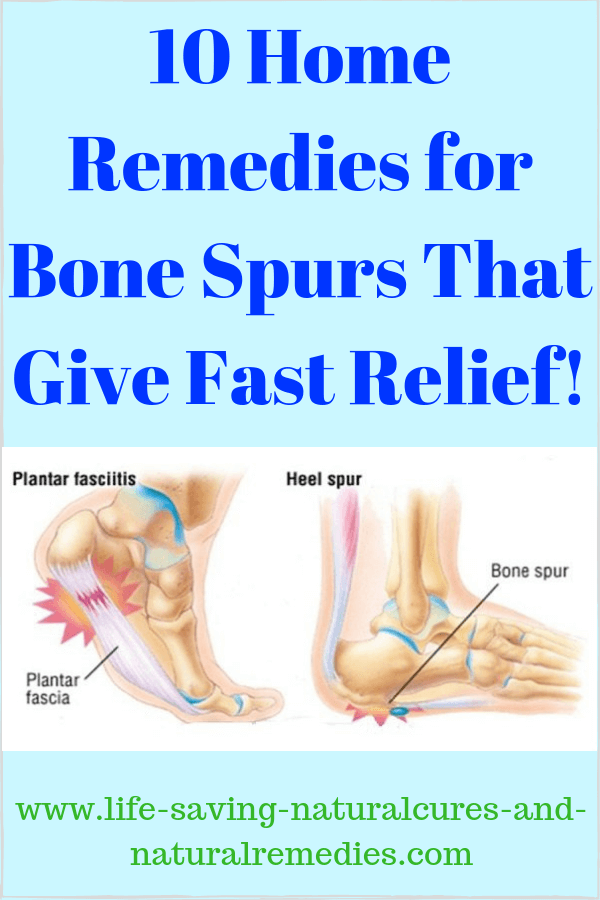How to fix plantar warts. 7 Effective Plantar Wart Treatments: Home Remedies and Medical Options
How can you effectively treat plantar warts at home. What are the most reliable medical treatments for stubborn plantar warts. When should you seek professional help for plantar wart removal. What are the risks and benefits of different plantar wart treatments.
Understanding Plantar Warts: Causes and Symptoms
Plantar warts are a common foot condition caused by the human papillomavirus (HPV). These warts typically appear on the soles of the feet, where they can cause discomfort and pain, especially when walking or standing. Understanding the nature of plantar warts is crucial for effective treatment.
Plantar warts are characterized by:
- Small, rough growths on the soles of the feet
- Tiny black dots (often referred to as “wart seeds,” which are actually blood vessels)
- Pain or tenderness when walking or standing
- A tendency to grow larger over time
The virus responsible for plantar warts thrives in warm, moist environments and can enter the skin through tiny cuts or abrasions. This is why plantar warts are often contracted in public swimming pools, locker rooms, or similar shared spaces where people walk barefoot.
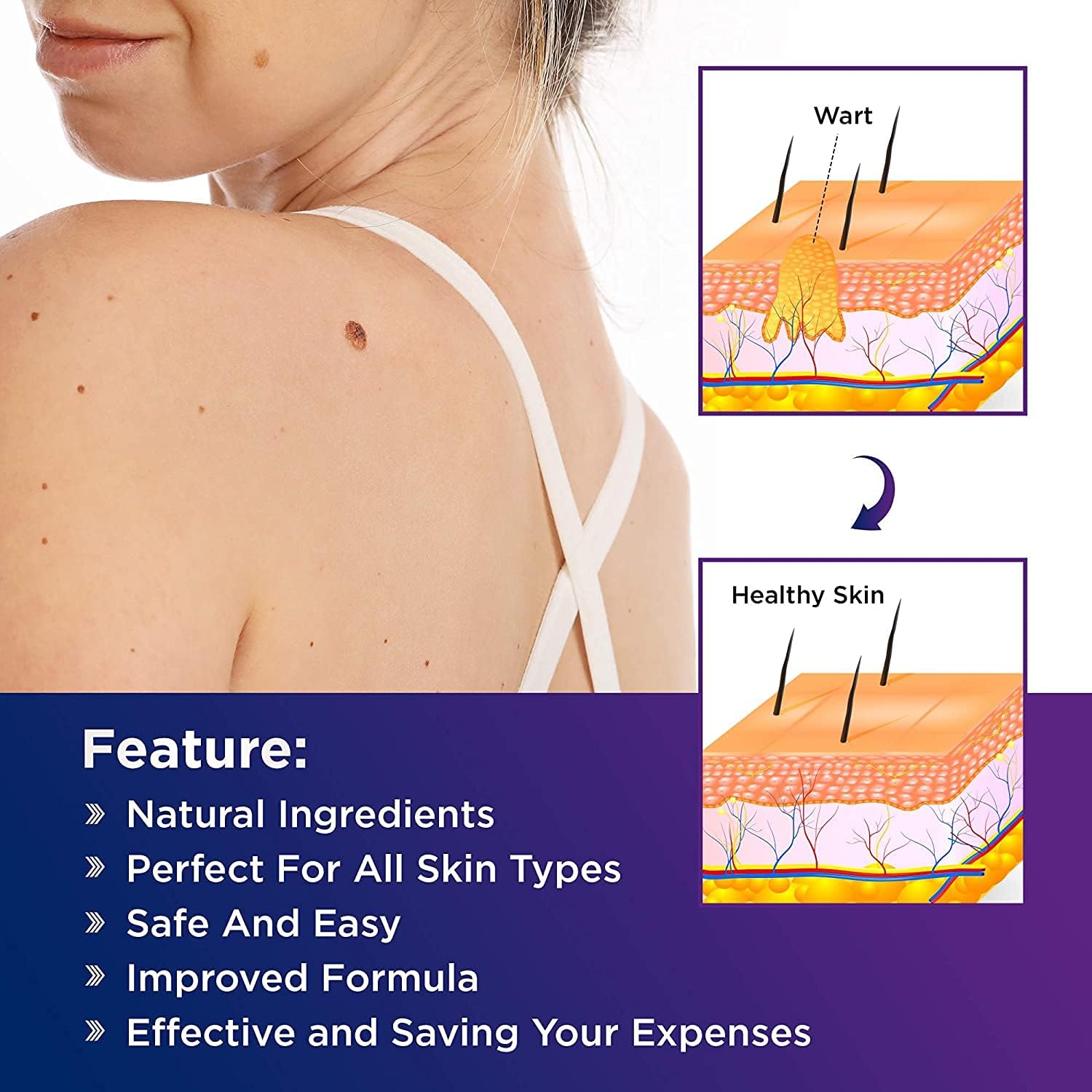
Home Remedies for Plantar Wart Removal
While plantar warts can be stubborn, several home remedies may help in their removal. It’s important to note that these methods may take several weeks or even months to show results, and their effectiveness can vary from person to person.
1. Duct Tape Method
The duct tape method is a popular home remedy for plantar warts. How does it work? The theory is that covering the wart with duct tape may help “peel away” the layers of the wart over time. To try this method:
- Cut a small piece of duct tape to cover the wart completely
- Leave the tape on for about six days
- Remove the tape, soak the wart in warm water, and gently scrub with a pumice stone or emery board
- Leave the wart uncovered overnight
- Repeat the process until the wart is gone (this may take several weeks)
While scientific evidence supporting this method is mixed, it’s generally considered harmless to try. However, if you have sensitive skin or diabetes, consult your healthcare provider before attempting this method.

2. Salicylic Acid Treatment
Salicylic acid is a common ingredient in over-the-counter wart treatments. This substance works by gradually peeling away the infected skin. How should you use salicylic acid for plantar warts?
- Choose a product with a concentration between 17% and 40% salicylic acid
- Soak the affected area in warm water for about 10 minutes
- Gently file away the dead skin with a pumice stone or emery board
- Apply the salicylic acid according to the product instructions
- Cover the area with a bandage
- Repeat daily for several weeks
This treatment can be effective, but it requires patience and consistency. It’s important to follow the instructions carefully to avoid skin irritation.
3. Tea Tree Oil Application
Tea tree oil is known for its antiviral and antiseptic properties, which may make it beneficial for treating plantar warts. A case report from 2008 suggested that tea tree oil successfully removed hand warts after daily application for 12 days. While this is promising, more research is needed to confirm its effectiveness for plantar warts.

If you decide to try tea tree oil:
- Dilute the oil with a carrier oil like coconut oil (1 part tea tree oil to 4 parts carrier oil)
- Apply the mixture to the wart using a cotton swab
- Cover with a bandage and leave overnight
- Repeat daily for several weeks
Be cautious when using tea tree oil, as it can cause skin irritation in some people. If you notice any adverse reactions, discontinue use immediately.
Over-the-Counter Treatments for Plantar Warts
When home remedies don’t yield results, over-the-counter treatments can be a next step in plantar wart removal. These products often contain stronger concentrations of active ingredients and may be more effective than home remedies.
1. Salicylic Acid Products
Over-the-counter salicylic acid products are available in various forms, including gels, pads, and liquids. These products typically contain higher concentrations of salicylic acid than home remedy preparations. How do these products work?
- They soften the hardened skin of the wart
- They gradually peel away the infected tissue
- They stimulate the immune system to fight the virus
When using these products, follow the instructions carefully and be prepared for treatment to take several weeks.

2. Freezing Sprays
Cryotherapy, or freezing, is a common treatment for warts. While professional cryotherapy uses liquid nitrogen, over-the-counter freezing sprays use dimethyl ether and propane to create a freezing effect. How do these sprays work?
- They create a blister under and around the wart
- The blister lifts the wart away from the skin
- As the blister heals, the wart and surrounding dead skin falls off
These products can be effective, but they may require multiple applications. Always follow the product instructions carefully to avoid damaging healthy skin.
Medical Treatments for Stubborn Plantar Warts
When home remedies and over-the-counter treatments fail to remove plantar warts, medical interventions may be necessary. These treatments are typically more aggressive and should be performed by a healthcare professional.
1. Professional Cryotherapy
Professional cryotherapy uses liquid nitrogen to freeze the wart, which is much colder than over-the-counter freezing sprays. How does this treatment work?

- The extreme cold destroys the wart tissue
- It stimulates an immune response to fight the virus
- The treated area blisters and peels off, taking the wart with it
This treatment can be painful and may require multiple sessions. It’s particularly effective for smaller warts.
2. Laser Therapy
Laser therapy uses intense light to burn and destroy the blood vessels that feed the wart. This treatment can be effective for persistent warts that haven’t responded to other treatments. What should you know about laser therapy for plantar warts?
- It’s typically used as a last resort for stubborn warts
- It can be painful and may require local anesthesia
- Multiple treatments may be necessary
- It can be expensive and may not be covered by insurance
3. Surgical Excision
In some cases, a doctor may recommend surgically removing the wart. This is typically reserved for large or recurring warts that haven’t responded to other treatments. What does surgical excision involve?
- The wart is cut out under local anesthesia
- The procedure leaves a scar
- There’s a risk of the wart recurring
- Recovery time may be longer than with other treatments
Prevention Strategies for Plantar Warts
While treating existing plantar warts is important, preventing future infections is equally crucial. How can you reduce your risk of developing plantar warts?

- Avoid walking barefoot in public areas, especially around pools and locker rooms
- Keep your feet clean and dry
- Don’t share shoes, socks, or towels with others
- Wear flip-flops or water shoes in public showers
- Change your shoes and socks daily
- Avoid touching or scratching existing warts to prevent spread
By following these preventive measures, you can significantly reduce your risk of contracting or spreading plantar warts.
When to Seek Professional Help for Plantar Warts
While many plantar warts can be treated at home, there are situations where professional medical help is necessary. When should you consult a healthcare provider about your plantar warts?
- If the wart is painful or interferes with your daily activities
- If home treatments haven’t worked after several weeks
- If you have diabetes or a weakened immune system
- If you’re unsure whether the growth is a wart or something else
- If the wart is bleeding, changing color, or rapidly growing
A podiatrist or dermatologist can provide a proper diagnosis and recommend the most appropriate treatment for your specific case.
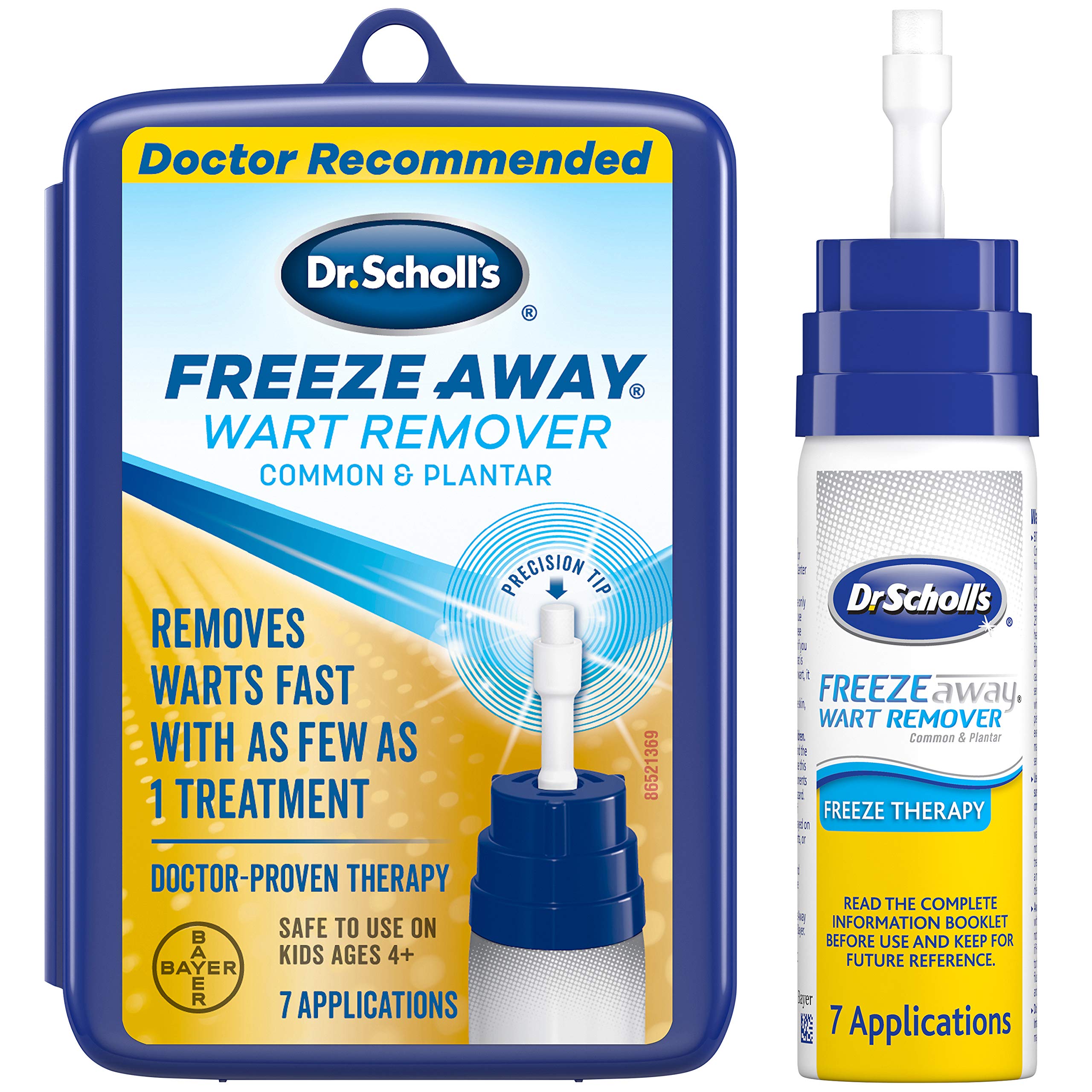
Myths and Misconceptions About Plantar Wart Treatment
There are many myths surrounding plantar wart treatment that can lead to ineffective or potentially harmful practices. Let’s debunk some common misconceptions:
Myth 1: Cutting off a plantar wart will cure it
This is not only incorrect but potentially dangerous. Cutting a wart can lead to infection and scarring. Moreover, the virus causing the wart is in the skin cells, so cutting off the surface won’t eliminate the infection.
Myth 2: Plantar warts have roots that need to be removed
Contrary to popular belief, warts don’t have roots. The black dots often seen in plantar warts are actually small blood vessels. Treatments aim to remove the entire wart, not just a “root.”
Myth 3: Plantar warts are highly contagious
While plantar warts are contagious, the risk of transmission is relatively low. The virus requires direct contact and often enters through small breaks in the skin.
Myth 4: All bumps on the feet are plantar warts
Not all growths on the feet are warts. Corns, calluses, and even some types of skin cancer can resemble warts. If you’re unsure, it’s best to consult a healthcare professional for a proper diagnosis.

Understanding these myths can help you approach plantar wart treatment more effectively and safely.
Long-Term Management of Plantar Warts
Managing plantar warts often extends beyond initial treatment. How can you ensure long-term success in dealing with plantar warts?
- Be patient with treatments, as warts can take weeks or months to disappear completely
- Continue preventive measures even after the wart is gone to prevent recurrence
- Boost your immune system through a healthy diet, regular exercise, and stress management
- Monitor the treated area for any signs of recurrence
- Consider professional follow-ups to ensure complete eradication of the virus
Remember, even after successful treatment, there’s always a chance of recurrence. Maintaining good foot hygiene and following preventive measures are key to long-term management of plantar warts.
In conclusion, while plantar warts can be frustrating and uncomfortable, there are numerous treatment options available, ranging from home remedies to medical interventions. By understanding the nature of plantar warts, exploring various treatment options, and following preventive measures, you can effectively manage this common foot condition. Always consult with a healthcare professional if you’re unsure about the best course of action for your specific case.
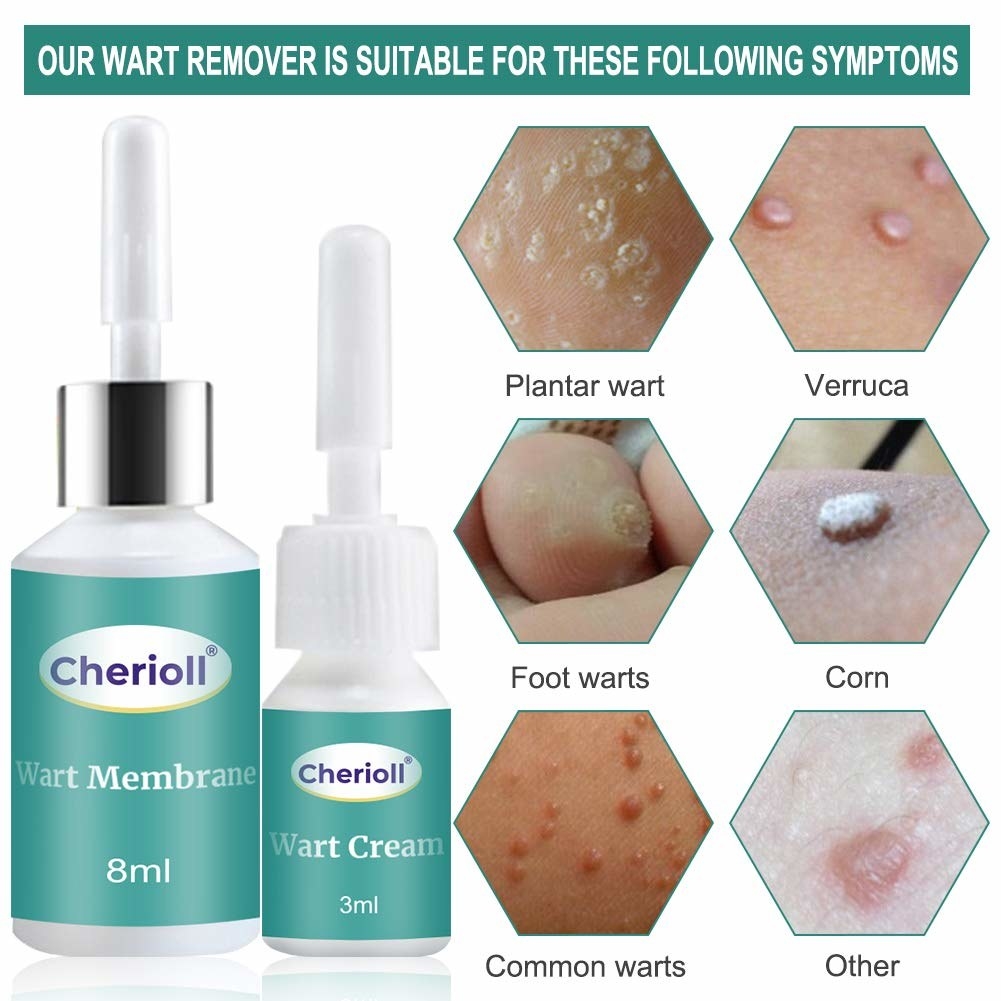
Plantar Wart Home Remedy: 7 Treatments
Plantar warts may go away on their own or with home remedies and over-the-counter products, such as salicylic acid.
Plantar warts occur from a viral infection in your skin called the human papillomavirus (HPV). This virus can enter damaged skin more easily, such as cuts, scrapes, or severely dry skin. Plantar warts are common on the soles of the feet.
These types of warts can be painful, and the resulting raised bumps uncomfortable. Plantar warts may also have tiny black spots that some people call “wart seeds.” These spots are actually blood vessels. While not necessarily harmful, plantar warts can grow and eventually make it uncomfortable to stand and walk.
It’s often possible to treat plantar warts at home, but it’s also important to know when you should see a doctor for medical treatment.
While plantar warts aren’t typically dangerous, you might want to get them removed due to discomfort and aesthetic reasons. Warts can get larger over time or spread to other areas. Most wart removal treatments will take several weeks, if not longer, according to the American Academy of Dermatology.
Warts can get larger over time or spread to other areas. Most wart removal treatments will take several weeks, if not longer, according to the American Academy of Dermatology.
Duct tape
Some people claim you can get rid of plantar warts by using duct tape.
The evidence to support this method is mixed, according to experts. But even if it doesn’t help, using duct tape probably won’t cause harm. To try it, stick a small piece of tape over the wart, and then change the tape every few days.
The idea behind duct tape for warts is that it could help “peel away” the layers of the wart. In theory, the wart could eventually peel completely away. But it’s not known if duct tape really works this way.
Salicylic acid
Salicylic acid is a type of beta hydroxy acid often used in acne treatment. It works by removing dead skin cells, which can sometimes clog your pores.
Higher concentrations of salicylic acid can be found in over-the-counter (OTC) wart creams treatments.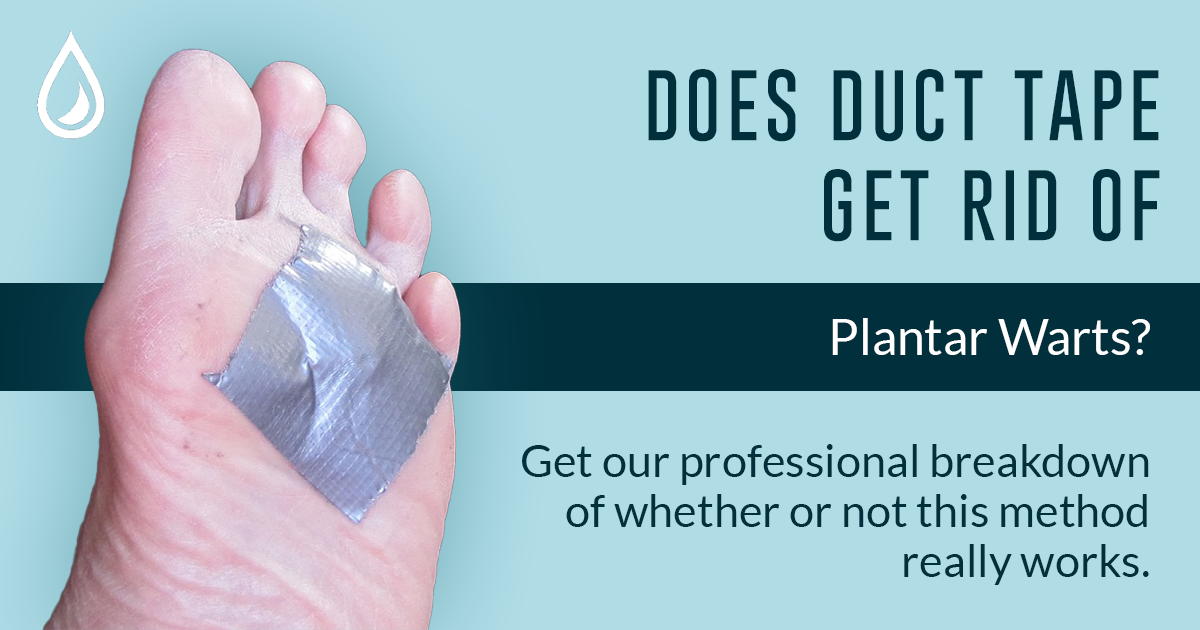 These products shed the skin around the wart little by little, until it’s eventually cleared up completely.
These products shed the skin around the wart little by little, until it’s eventually cleared up completely.
To get the most out of this treatment, you’ll need to apply the salicylic acid product on your plantar warts according to the instructions on the packaging, and continue the treatment for as long as directed.
Some products may advise you to to prep the skin by soaking the affected area in warm water before applying the acid.
It can take several weeks of treatment for the warts to completely go away.
OTC freezing sprays
Aside from salicylic acid, you can also buy “freezing sprays” at the drugstore for plantar warts. The spray works by creating a small blister-like injury that may help destroy the wart. This is different from the cryotherapy wart treatments that are available at a doctor’s office.
To use freezing spray, carefully follow the instructions on the packaging. You might have to repeat the process several times to kill the wart. Check the instructions to see if it’s safe to do so. If OTC treatment doesn’t get rid of the wart, talk with your doctor about other treatment options.
Check the instructions to see if it’s safe to do so. If OTC treatment doesn’t get rid of the wart, talk with your doctor about other treatment options.
Iodine
Iodine is an essential mineral that’s most often associated with thyroid health. But certain formulations can be used for other purposes too — this may include wart removal.
One small study found that a povidone-iodine topical solution helped clear up warts after twice-daily applications over the course of 12 weeks.
Researchers are conducting clinical trials to test povidone-iodine’s safety and effectiveness for wart treatment. In the meantime, you should only use povidone-iodine for warts under a doctor’s supervision.
Tea tree oil
Tea tree oil has historically been used as a topical antiseptic. It’s primarily used for fungal infections, wounds, and acne.
One case report from 2008 found that tea tree oil successfully removed warts on a person’s hand when applied once daily for 12 days. While this single report is promising, much more research is needed before experts can recommend this approach.
While this single report is promising, much more research is needed before experts can recommend this approach.
Tea tree oil can cause irritation or contact dermatitis for some people. If you use topical products containing tea tree oil, stop using them if you notice a rash or other symptoms.
Apple cider vinegar
Apple cider vinegar continues to be studied for a wide range of health claims. It contains a type of acid called acetic acid. Some older reports suggest that concentrated acetic acid can be used to treat warts. However, these treatments took place in a clinic with careful medical management.
The amount of acetic acid found in apple cider vingar is much less than the acetic acid preparations used in these studies. There’s also no evidence to suggest that apple cider vinegar is safe or effective for treating warts.
Because undiluted apple cider vinegar can cause chemical burns, you should not apply it to your skin. All in all, this wart “remedy” is likely one to avoid.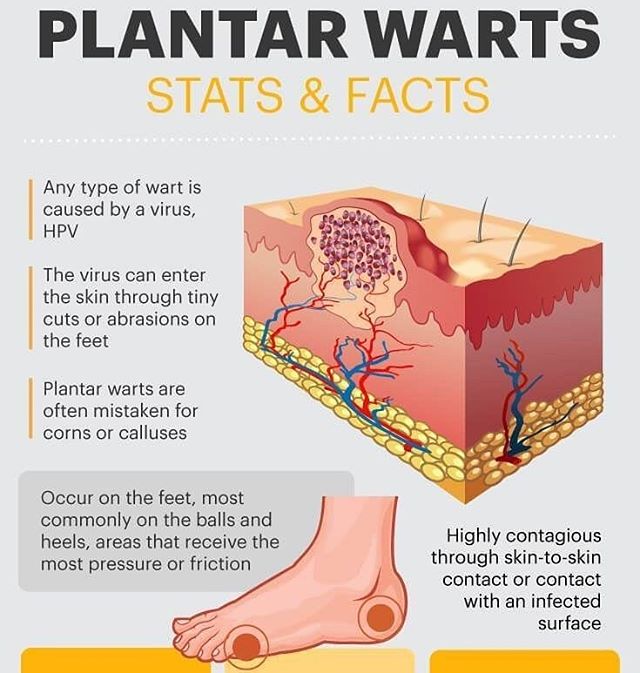
Calluses are caused by repeated friction against the skin. These are most common on your hands and feet. With a callus, you may notice a flat area of thickened skin.
Calluses aren’t the same thing as plantar warts. However, sometimes the two look alike. It’s also possible to have plantar warts inside of a callus.
In some cases, you may be able to tell the difference by looking at the lines on your skin. With warts, you may see interrupted skin lines (your skin lines do not continue on the wart). With a callus, the skin lines are not interrupted.
Calluses can go away on their own when friction against the skin has stopped, such as when changing tight shoes for a better-fitting pair. The outer skin of the callus may also be cut off or filed away.
While plantar warts are caused by the HPV virus, there are other risk factors to consider. You might be at an increased risk of getting plantar warts if you:
- have a history of plantar warts
- are a child or a teenager
- have a weakened immune system
- frequently walk barefoot, especially in germ-prone areas like locker rooms
With the right precautions, plantar warts can often be prevented, even if you’re at a higher risk of developing them:
- Avoid touching warts, including your own.

- Wash your hands before and after touching a wart.
- Don’t pick at a plantar wart with your fingers.
- Avoid using the files and pumice stones you used on affected areas of skin for nonaffected areas.
- Don’t walk barefoot in public areas.
- Keep your feet clean and dry.
- Change your socks and shoes frequently.
Plantar warts that don’t go away or keep coming back despite home treatments should be looked at by a doctor. They can treat the warts in the office with cryotherapy or other treatments. They might also recommend prescription medications to help treat the wart.
For chronic plantar warts, your doctor may refer you to a foot specialist.
If you have any of the following conditions, see your doctor before starting a home wart treatment:
- diabetes
- a weakened immune system
- HIV or AIDS
- solid brown or black warts (these could be cancerous)
- plantar warts that change in color and size
- severe discomfort due to the warts
- changes in your gait
Plantar warts tend to go away eventually, and you may be able to treat them at home.
When in doubt, always ask a doctor for advice, especially if the plantar warts worsen or affect your daily mobility.
Plantar warts | Sparrow
Overview
Plantar warts are small, rough growths on the feet. They usually show up on the balls and heels of the feet, the areas that bear the most pressure. This pressure may also cause a wart to grow inward beneath a hard, thick layer of skin (callus).
Plantar warts are caused by HPV. This virus enters through tiny cuts or breaks on the bottom of the feet.
Most plantar warts aren’t a serious health concern and often go away without treatment, especially in children under 12. To get rid of them sooner, you can try self-care treatments or see your health care provider.
Symptoms
Plantar wart signs and symptoms include:
- A small, rough growth on the bottom of your foot, usually at the base of the toes or on the ball or heel
- On brown and Black skin, the growth may be lighter than unaffected skin
- Hard, thickened skin (callus) over a spot on the skin, where a wart has grown inward
- Black pinpoints, which are small clotted blood vessels commonly called wart seeds
- A cluster of growths on the sole of the foot (mosaic warts)
- A growth that interrupts the normal lines and ridges in the skin of your foot
- Pain or tenderness when walking or standing
When to see a doctor
See your health care provider for the growth on your foot if:
- The growth is bleeding, painful or changes in shape or color
- You’ve tried treating the wart, but it persists, multiplies or comes back after clearing for a time (recurs)
- Your pain interferes with your activities
- You also have diabetes or poor feeling in your feet
- You also have a weak immune system because of immune-suppressing drugs, HIV/AIDS or other immune system disorders
- You aren’t sure if the growth is a wart
Causes
Plantar warts are caused by an infection with HPV in the outer layer of skin on the soles of the feet. The warts develop when the virus enters through tiny cuts, breaks or weak spots on the bottom of the foot. If left untreated, warts can last from a few months to 2 years in children, and several years in in adults.
The warts develop when the virus enters through tiny cuts, breaks or weak spots on the bottom of the foot. If left untreated, warts can last from a few months to 2 years in children, and several years in in adults.
HPV is very common, and more than 100 kinds of the virus exist. But only a few of them cause warts on the feet. Other types of HPV are more likely to cause warts on other areas of your skin or on mucous membranes.
Transmission of the virus
Each person’s immune system responds differently to HPV. Not everyone who comes in contact with it develops warts. Even people in the same family react to the virus differently.
The HPV strains that cause plantar warts aren’t highly contagious. So the virus isn’t easily spread by direct contact from one person to another. But it thrives in warm, moist places, so you might get the virus by walking barefoot around swimming pools or locker rooms. If the virus spreads from the first site of infection, more warts may grow.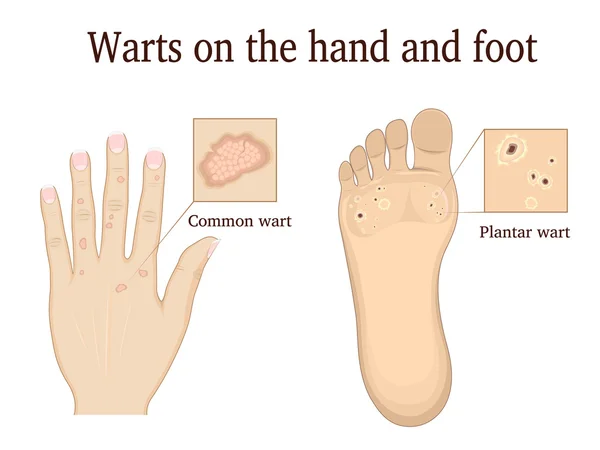
Risk factors
Anyone can develop plantar warts, but this type of wart is more likely to affect:
- Children and teenagers
- People with weak immune systems
- People who have had plantar warts before
- People who walk barefoot in areas where a wart-causing virus is common, such as locker rooms and swimming pools
Complications
When plantar warts cause pain, you may alter your normal posture or gait — perhaps without realizing it. Eventually, this change in how you stand, walk or run can cause muscle or joint discomfort.
Prevention
To help prevent plantar warts:
- Avoid direct contact with warts. This includes your own warts. Wash your hands carefully after touching a wart.
- Keep your feet clean and dry.
- Wear sandals or other foot protection when walking around swimming pools, in locker rooms or in gym showers.
- Don’t pick at or scratch warts.
- When using an emery board, pumice stone or nail clipper on your warts, choose one that you don’t use on your healthy skin and nails.

Diagnosis
A health care provider usually diagnoses a plantar wart by looking at it or cutting off the top layer with a scalpel and checking for dots. The dots are tiny clotted blood vessels. Or your health care provider might cut off a small section of the growth and send it to a lab for testing.
Treatment
Most plantar warts are harmless and go away without treatment, though it may take a year or two in children, and even longer in adults. If you want to get rid of warts sooner, and self-care approaches haven’t helped, talk with your health care provider. Using one or more of the following treatments may help:
Freezing medicine (cryotherapy). Cryotherapy is done in a clinic and involves applying liquid nitrogen to the wart, either with a spray or a cotton swab. This method can be painful, so your health care provider may numb the area first.
The freezing causes a blister to form around your wart, and the dead tissue sloughs off within a week or so.
 Cryotherapy may also stimulate your immune system to fight viral warts. You may need to return to the clinic for repeat treatments every 2 to 3 weeks until the wart disappears.
Cryotherapy may also stimulate your immune system to fight viral warts. You may need to return to the clinic for repeat treatments every 2 to 3 weeks until the wart disappears.Possible side effects of cryotherapy are pain, blisters and permanent changes in skin color (hypopigmentation or hyperpigmentation), particularly in people with brown or Black skin.
Stronger peeling medicine (salicylic acid). Prescription-strength wart medications with salicylic acid work by removing a wart a layer at a time. They may also boost your immune system’s ability to fight the wart.
Your health care provider will likely suggest you apply the medicine regularly at home, followed by occasional office visits. It might take weeks to remove the wart using this method.
Surgical or other procedures
If salicylic acid and freezing medicine don’t work, your health care provider may suggest one or more of the following treatments:
- Minor surgery.
 Your health care provider cuts away the wart or destroys it by using an electric needle (electrodesiccation and curettage). This method can be painful, so your health care provider will numb your skin first. Because surgery has a risk of scarring, it’s not often used to treat plantar warts unless other treatments have failed. A scar on the sole of the foot can be painful for years.
Your health care provider cuts away the wart or destroys it by using an electric needle (electrodesiccation and curettage). This method can be painful, so your health care provider will numb your skin first. Because surgery has a risk of scarring, it’s not often used to treat plantar warts unless other treatments have failed. A scar on the sole of the foot can be painful for years. - Blistering medicine. Your health care provider applies cantharidin, which causes a blister under the wart. You may need to return to the clinic in about a week to have the dead wart clipped off.
- Immune therapy. This method uses medications or solutions to stimulate your immune system to fight viral warts. Your health care provider may inject your warts with a foreign substance (antigen) or apply a solution or cream to the warts.
- Laser treatment. Pulsed-dye laser treatment burns closed (cauterizes) tiny blood vessels.
 The infected tissue eventually dies, and the wart falls off. This method needs to be repeated every 2 to 4 weeks. Your health care provider will likely numb your skin first.
The infected tissue eventually dies, and the wart falls off. This method needs to be repeated every 2 to 4 weeks. Your health care provider will likely numb your skin first. - Vaccine. HPV vaccine has been used with success to treat warts even though this vaccine is not specifically targeted toward the wart viruses that cause plantar warts.
If a plantar wart goes away after treatment and another wart grows, it could be because the area was exposed again to HPV.
Lifestyle and home remedies
Many people have removed warts with these self-care tips:
- Peeling medicine (salicylic acid). Nonprescription wart removal products are sold as a patch, gel or liquid. You’ll likely be instructed to wash the site, soak it in warm water, and gently remove the top layer of softened skin with a pumice stone or emery board. Then after the skin has dried, you apply the solution or patch. Patches are often changed every 24 to 48 hours.
 Liquid products are used daily. It might take weeks to remove the wart using this method.
Liquid products are used daily. It might take weeks to remove the wart using this method. - Freezing medicine (cryotherapy). Nonprescription medicines that freeze the wart include Compound W Freeze Off and Dr. Scholl’s Freeze Away. The Food and Drug Administration cautions that some wart removers are flammable and shouldn’t be used around fire, flame, heat sources (such as curling irons) and lit cigarettes.
- Duct tape. Using duct tape to remove warts is a harmless but unproven approach. To try it, cover the wart with silver duct tape, changing it every few days. Between applications, soak the wart and gently remove dead tissue with a pumice stone or emery board. Then leave the wart open to the air to dry for a few hours before covering it with tape again.
In general, no matter which treatment you try, do these two things:
- Cover the wart to help prevent it from spreading to other parts of the body or to other people.

- Wash your hands after touching the wart.
If a plantar wart goes away after treatment and another wart grows, it could be because the area was exposed again to HPV.
Preparing for an appointment
You’ll likely start by seeing your primary care provider, who may then refer you to a specialist in disorders of the skin (dermatologist) or feet (podiatrist). The following tips can help you prepare for your appointment.
Prevention
What you can do
Bring a list of all medications you take regularly — including nonprescription medications and dietary supplements — and the daily dosage of each.
You may also want to list questions for your health care provider, such as:
- If I have a plantar wart, can I start with at-home care?
- If I use a home treatment, under what conditions should I call you?
- If the first treatment doesn’t work, what will we try next?
- If the growth isn’t a plantar wart, what tests do you need to do?
- How long will it take to get results?
- How can I prevent warts?
Preparing for an appointment
What to expect from your doctor
Your health care provider may ask you questions such as:
- When did you first notice the wart?
- Has it changed in size, color or shape?
- Is your condition painful?
- Have you had warts before?
- Do you have diabetes or poor sensation in your feet?
- Do you have any condition or take any medication that has weakened your ability to fight disease (immune response)?
- Have you tried any home remedies? If so, how long have you used them and have they helped?
- Do you use a swimming pool or locker room — places that can harbor wart-causing viruses?
What you can do in the meantime
If you’re sure you have a plantar wart, you may try nonprescription remedies or alternative medicine approaches. But talk with your health care provider before trying self-care treatments if you have:
But talk with your health care provider before trying self-care treatments if you have:
- Diabetes
- Poor sensation in your feet
- Weakened immunity
If pressure on the wart causes pain, try wearing well-cushioned shoes, such as athletic shoes that evenly support the sole and relieve some of the pressure. Avoid wearing uncomfortable shoes.
Plantar Wart (Spike): Causes and Treatments
Plantar Warts is a type of wart that occurs on the soles of the feet and on the palms of the hands.
Of all skin warts, plantar warts occur in 30%. They are the ones most often removed.
The only cause is the human papillomavirus, HPV for short.
Scheme of infection: people scratched the skin. The virus enters the skin. Embedded in the genes of skin cells. The cell takes on ugly forms, becoming similar to tumor cells.
Caution: Some types of human papillomavirus can cause cervical dysplasia and cancer.
Infection with the type of HPV that causes warts occurs during childhood. Almost all children become infected with this virus – in kindergartens, at schools, in public places. But not everyone gets sick – it all depends on the immune system. In childhood, warts appear for the first time. Then the adult’s immune system copes with this virus. Therefore, in adults, warts on the skin rarely appear. And if an adult has spikes, this indicates a decrease in the activity of the immune system.
Entrance gates for the virus are injuries of the soles of the feet and palms: scratches, cuts, abrasions and calluses. Provoking factors – excessive sweating of the feet and wearing tight shoes, stress.
Main manifestation : hard, round formation on the palm or sole of the foot.
Main symptom : Pain when walking and itching around the wart.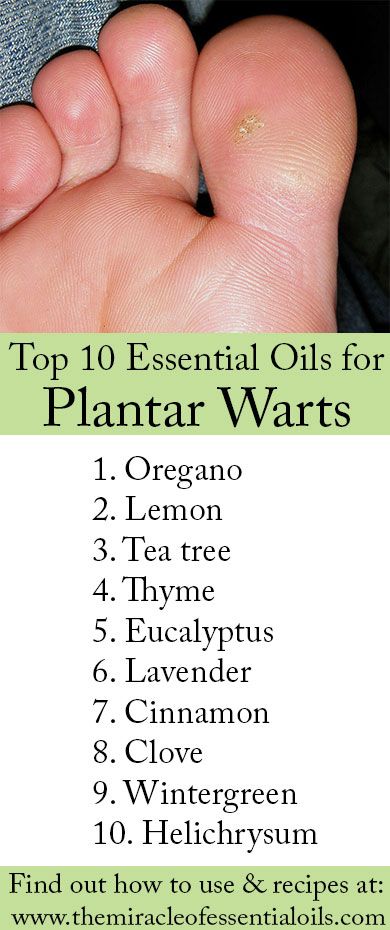
Initial stage:
- a small callus appears,
- she itches,
- hurts when walking.
After 2-4 weeks:
- Rough surface appears in the center,
- often – black dots in the center, **
- along the edges – a small roller of keratinized skin.
Why?
- Why do spines appear on the palm and sole? Because the skin here is especially dense (unlike other parts of the body). And this type of HPV virus infects just such skin.
- Why does it hurt when walking? Because the spine grows inward. When walking, the weight of the body presses on the wart and it compresses the pain receptors.
- Why is itching? Because the ugly cells of the plantar wart on the foot and palm press on neighboring skin receptors, which leads to itching.
- Why black dots? This is the result of blockage of blood vessels in the thickness of the wart on the foot or on the palm.

Dimensions – 3 -10 mm. At the same time, they rise above the surface of the skin by only 1-2 mm, because they grow inward and in breadth.
Child warts may appear nearby. They merge with the mother and form a painful conglomerate. This is a clear indicator of a decrease in immunity. And this often requires medical treatment.
Methods of treatment:
In 90% of people, a plantar wart goes away without treatment at an early stage. The immune system suppresses the virus and heals the skin.
The time of self-healing depends on the stage of the process: from 2 weeks to 1.5 years.
When should a thorn be treated?
- if it hurts a lot,
- if it interferes with walking,
- if grown to a large size,
- if children appear nearby.
How and with what to treat warts on the feet?
Removal – a treatment that is successful in 98% of patients
Drug removal
Local necrotizing agents are used for this purpose.
Solcoderm, vartoks, duofilm, kollomak, super celandine and others
They contain acids or alkalis. Removal of plantar warts (thorns) occurs through a chemical burn of the skin. The wart is dying.
And in this place there is an inconspicuous scar.
The treatment time is long: an average of 14-20 days).
The probability of recurrence (reappearance at the same place) is very high.
Instrument removal
- Laser.
Your wart will be vaporized by the laser. In this place you will have a deep wound. The wound will heal in 10-14 days.
Disadvantages of the method: deep wound after removal. Rough scarring.
- Liquid nitrogen.
Deep freezing of tissue occurs. A bubble forms. It will hurt a lot and then hurt more!! Heals 14 days.
Disadvantages of the method: Severe pain during removal and after removal. Prolonged healing. Rough scar.
- Radio wave radiation (device “Surgitron”).
The same effect as from the laser – tissue evaporation. And only a deepening-wound will remain from the wart.
And only a deepening-wound will remain from the wart.
Advantages of the method:
Nearby vessels are coagulated, forming a dense crust at the site of the neoplasm, so the removal is performed without damage to the vessels and does not cause even the slightest blood loss.
The crust disappears on its own after 7-10 days. In its place is an inconspicuous scar.
The wart is burned out with an electrocoagulator. This is the same scalpel, only electric. It is now rarely used in large clinics.
Prevention is the foundation of the foundations
- Wearing loose shoes.
- Treatment of excessive sweating of the feet.
- Treatment of injuries, scratches and cuts on the feet.
- A healthy lifestyle and strengthening of the immune system is the prevention of viral diseases, including the HPV virus.
plantar wart wart removal spine
Please enable JavaScript to view comments.
How to get rid of plantar warts?
What are warts?
Warts are benign neoplasms of the skin caused by the human papillomavirus, this virus penetrates the skin and mucous membranes. The most common manifestation of HPV infection in humans is the manifestation of plantar warts. More than 150 HPV subtypes are known in the world, some of them can be localized in certain areas of the body. HPV type 1 can mainly affect the feet and soles, which is manifested by the appearance of plantar warts.
How do warts appear?
HPV, which causes warts, is usually contracted through direct contact with infected skin or through contaminated objects. Such violations of the protective function of the skin: cuts, abrasions, burrs, various kinds of dermatitis, can contribute to the development of the disease. Symptomatically, warts appear through neoplasms on the skin, which cause discomfort and pain, both at rest and during walking, which greatly interferes with the life of a modern person.
How to get rid of plantar warts?
The most effective method of treatment is to remove warts that have already shown themselves. Chemical destruction with salicylic acid preparations or removal with liquid nitrogen can be used. These methods are the most proven, affordable and effective, but other removal methods are also acceptable:
Laser burning. With the help of a medical laser, the resulting build-up is removed in layers, it is possible to use local anesthesia. The method least injures the body, does not cause cosmetic defects in the area with the wart.
Electrocoagulation. Due to the impact of high-frequency current on the skin area, the roots of the wart are burned out, but after the wound has healed, scarring and scarring are acceptable.
Surgical removal. Surgical removal of warts is used when the growth roots are deep. Radio wave surgery uses high frequency radio waves (3.8 – 4.0 MHz.), which completely get rid of the wart.
Radio wave surgery uses high frequency radio waves (3.8 – 4.0 MHz.), which completely get rid of the wart.
In the treatment of plantar warts, the cryodestruction method has proven itself well. Carrying out this procedure over a diseased area of the skin is extremely effective, due to the extremely low temperature of nitrogen, any organic formations will be destroyed. Cryodestruction has no contraindications, it does not require injections of anesthetics that can cause dangerous allergic reactions. You can read more about the removal of plantar warts using cryodestruction in our article on cryodestruction.
The use of destruction with chemicals (salicylic acid), the use of cryodestruction are the first methods for the removal of simple and plantar warts. Unfortunately, plantar warts can be resistant to the chosen treatment, requiring a repeat procedure in the future. It is worth remembering that even the complete removal of warts does not lead to a cure for the HPV that causes them, so relapse is possible.
What are the advantages of these types of plantar wart removal?
Chemical destruction is a painless, bloodless removal method with minimal side effects.
Cryodestruction is a method that does not require anesthesia, preliminary preparation and the procedure itself takes a few minutes. By using cryosurgery, you choose a bloodless method of plantar wart removal, with minimal side effects, and quick healing allows you to quickly return to a comfortable daily life.
Radio wave removal – this method of surgical treatment allows you to completely get rid of the neoplasm in one procedure. Minimal skin trauma, provides better wound healing.
Ways to prevent the spread and spread of plantar warts:
● Use only personal shoes and leather goods.
● Use changeable shoes when visiting swimming pools, shared showers, changing rooms, baths.



 Cryotherapy may also stimulate your immune system to fight viral warts. You may need to return to the clinic for repeat treatments every 2 to 3 weeks until the wart disappears.
Cryotherapy may also stimulate your immune system to fight viral warts. You may need to return to the clinic for repeat treatments every 2 to 3 weeks until the wart disappears. Your health care provider cuts away the wart or destroys it by using an electric needle (electrodesiccation and curettage). This method can be painful, so your health care provider will numb your skin first. Because surgery has a risk of scarring, it’s not often used to treat plantar warts unless other treatments have failed. A scar on the sole of the foot can be painful for years.
Your health care provider cuts away the wart or destroys it by using an electric needle (electrodesiccation and curettage). This method can be painful, so your health care provider will numb your skin first. Because surgery has a risk of scarring, it’s not often used to treat plantar warts unless other treatments have failed. A scar on the sole of the foot can be painful for years.-Step-17.jpg) The infected tissue eventually dies, and the wart falls off. This method needs to be repeated every 2 to 4 weeks. Your health care provider will likely numb your skin first.
The infected tissue eventually dies, and the wart falls off. This method needs to be repeated every 2 to 4 weeks. Your health care provider will likely numb your skin first.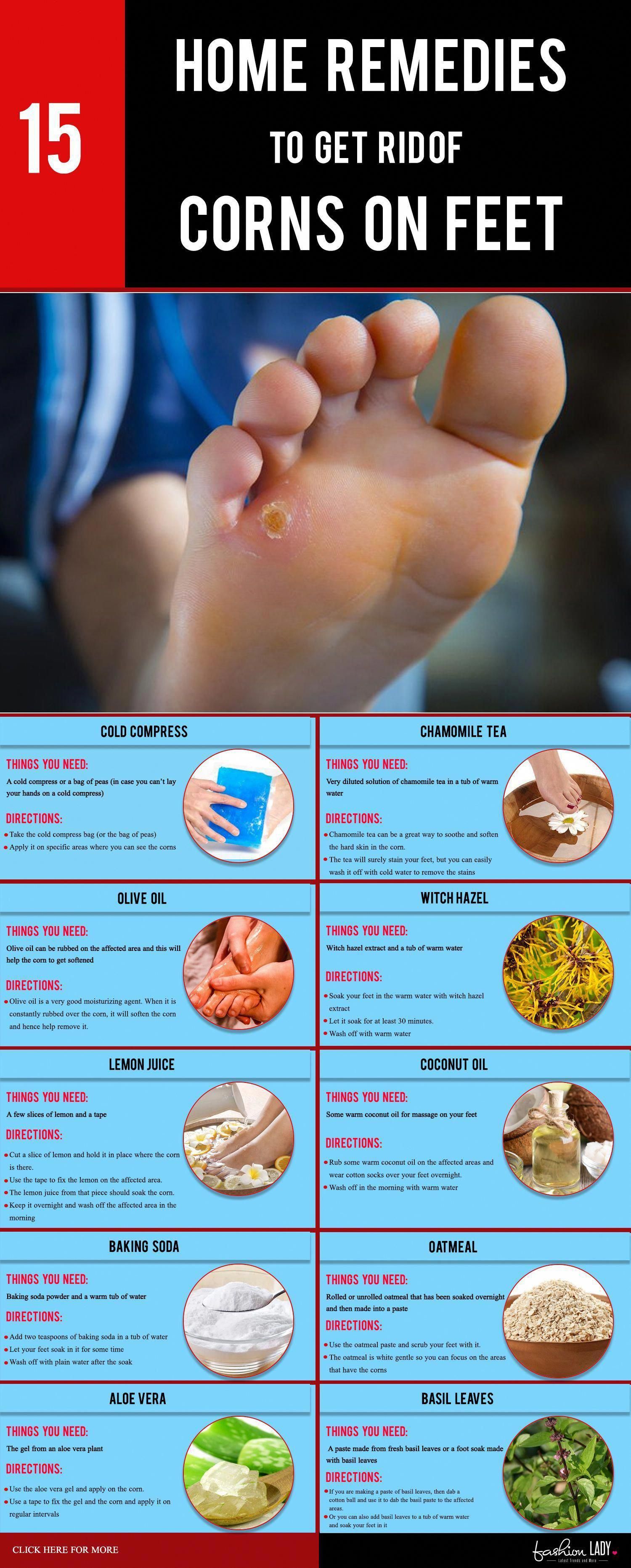 Liquid products are used daily. It might take weeks to remove the wart using this method.
Liquid products are used daily. It might take weeks to remove the wart using this method.